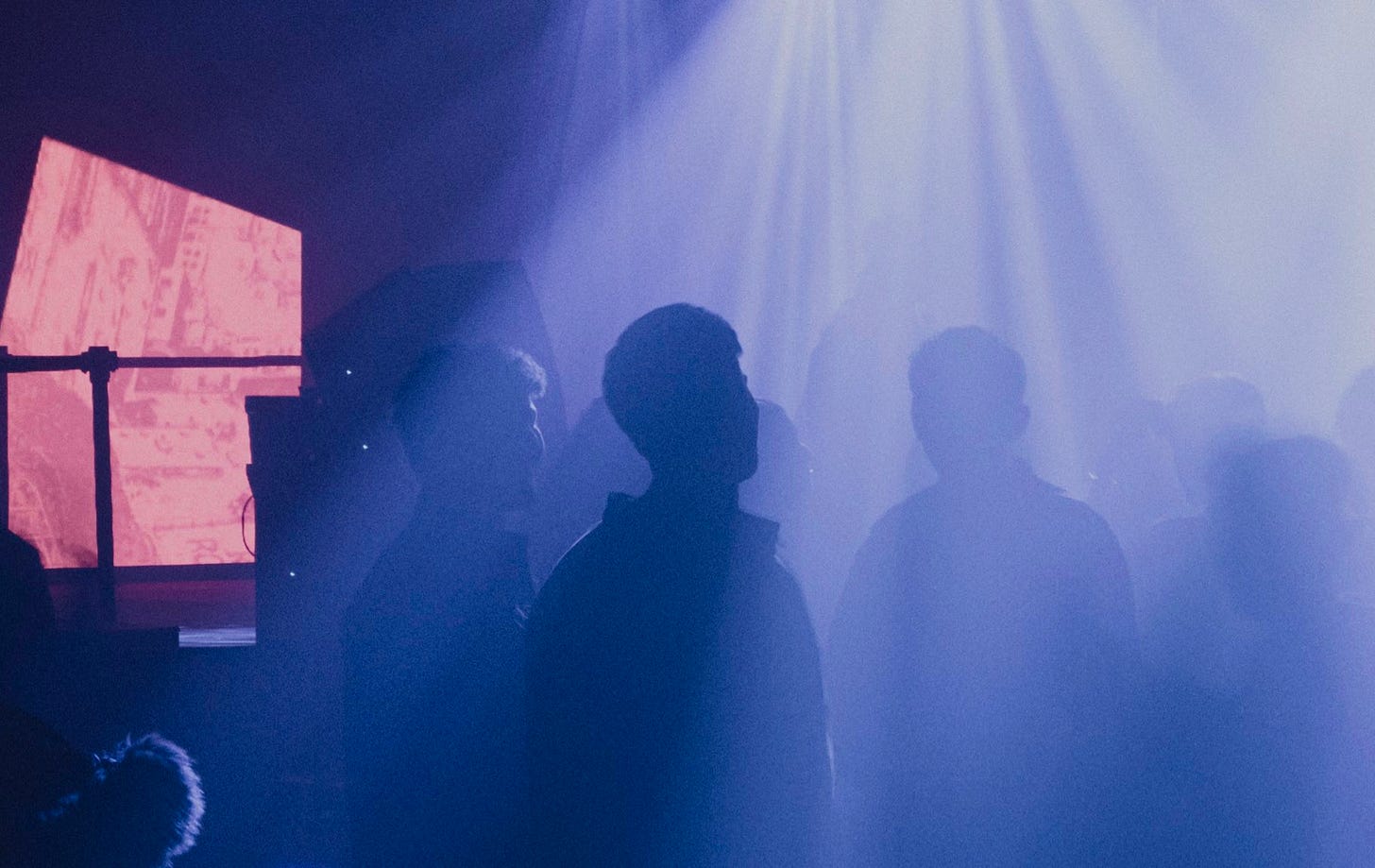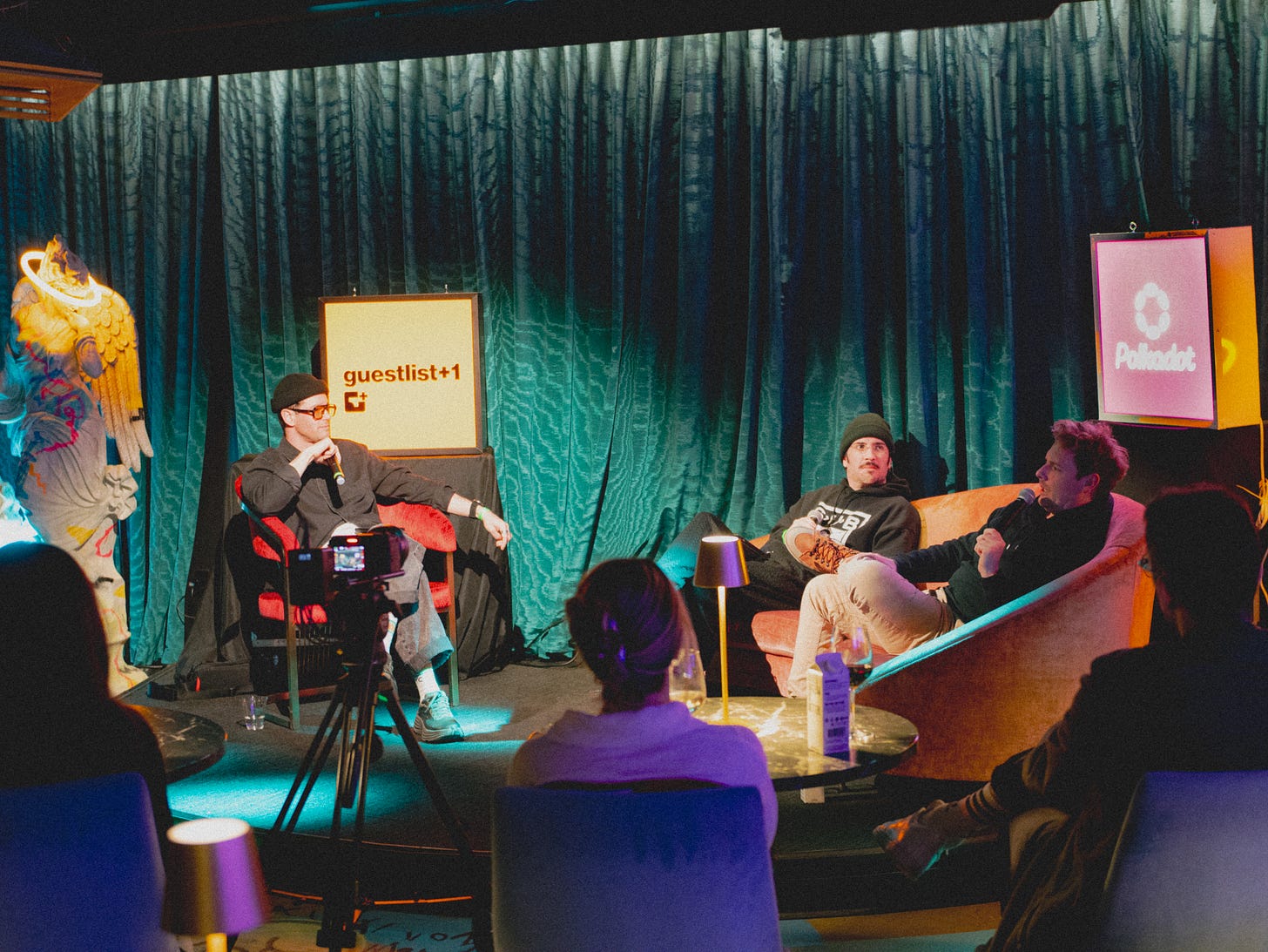Guest List +1 — Designed To Give Back
The music industry can be one-sided. Fans show up — but get nothing back. Let's play the game differently and see how platforms, artists & venues can connect with the people that matter the most — You
Yelling Into the Void — And Who Might Finally Be Listening
This is the cool place I went to, this is the stupid fucking meal I ate at some place you don’t know, this is the car that I overleveraged my personal finances for... the list goes on and on.
This is what social media is filled with. The second I click on a search tab, I’m inundated with men fighting in the street, impossibly beautiful people selling workout clothes, huckster DJ’s trying to make a career out of a need for not having a real job.
But here’s the rub: the problem isn’t that people aren’t yelling — it’s that no one’s listening.
No one can listen. These platforms, venues and brands weren’t built for conversation; they were built for scale. Make content. Feed the beast. Hope for the algorithmic pat on the head. Rinse and repeat. It’s not a relationship — it’s a self-flagellation treadmill.
A fan shows up early, reposts the flyer, brings a friend, buys the record, sticks around through the opener. All of that gets lost in Web2.
Web3 doesn’t just track that — it transforms it into access, status, perks, value.
That’s a real feedback loop.
"The music business is a strange combination of having to play a little bit of music and being a salesman. The problem is, people are very bad salesmen and even worse musicians."
— Frank Zappa, Interview with Playboy, 1993How do people get here?
Is it valid?
Do all “artists” have a place?
Does the world want to hear them?
I think the answer to all of these questions is “no” but I lean hard into pessimism. (clearly I’m just jaded and sarcastic and wrong, my {b})
But whether I like it or not, everyone DOES have a place in music. And I have more admiration for a music lover than my Uncle Dan that never held down a job and lives off my aunt (true story??, fuck yoouuu Dan). I have more gratitude to the artist that hones her/his craft for years to cultivate a true original approach to their art.
But that’s the old model, and frankly, one that might not have its place in a modern music landscape. I believe that “the cream always rises to the top” will always hold true. Yet social media and how people engage with your music or content, has invented many shades of grey within this model. We have more variance. We have more “good” music and more “bad” music. We simply have WAY more music. And it ain’t stopping here. Period. And art is subjective so who’s to say anyways. If everyone liked what I thought was “good” music, I’d be so sick of it anyways that I wouldn’t even like it anymore (unlike the Uncle Dan story, this is 100% facts).
🔊 Over 120,000 tracks are uploaded to Spotify every single day (read that again!)
– Source: Spotify Loud & Clear Report
🎚️ Beatport sees over 25,000 new tracks added weekly.
– Source: Beatport Stats
Cool or not, good or bad — what do we have left? MUSIC. It still brings people together. But here’s the rub: how do you get your music out there to reach that moment of connection? How do you spread the message of your brand? How do you sell yourself effectively? Even the fake Instagram DJs are trying to bring people together — at least, sweet cheesus, I hope so.
The technological barrier to entry for electronic music is very low, lowest it’s ever been. I could get you started on a hacked DAW (Digital Audio Workstation (the place on your computer where you record)) with some stolen sample packs in about 15 minutes. All it takes is a decent internet connection. Point is, there is a lot of music. There is a lot of platforms. Even if you are a brand, how do you get your event seen, your product sold, your message spread? Most small businesses go tits-up within 2 years and I’d like to think that for this new era of “social media small businesses” the statistics are even less in favor of success.
So go ahead, yell into the void. But maybe also… build something where the void can yell back.
Because that’s the core problem. It’s not that people aren’t yelling — it’s that no one’s listening.
But Web3 shifts the whole dynamic.
Web3 says: what if engagement meant something? What if participation could be recorded, verified, rewarded? What if the people who support you actually got more than a double-tap or a YouTube comment heart? What if the system didn’t just hear you — but responded? Thanks for buying the new record, thanks for attending the venue and spending half your paycheck on drinks. Thanks for picking up our trite streetwear style merch.
That’s what “user rewards” are really about.
They’re not gimmicks. They’re not throwaways.
They’re infrastructure for recognition.
That’s a real feedback loop.
This is what needs to be built: tools that let artists, venues, and brands not just be seen — but actually see back. To notice the OG’s and fan-girls alike. To reward them. To build with them.
"WAPI’s custodial features prioritize unmatched security: we never store wallets in a single database. Instead, we use multi-layered encryption and Shamir’s Secret Sharing to split wallet secrets into parts, securely distributed across global platforms. No complete secret is ever stored in one place, ensuring maximum protection."
— Sam Ruberti, Lead Engineer at mufiHey Uncle Dan, here’s a user rewards layer on top of the infrastructure we’ve already built, you sloth. The Wallets API is live, integrating with Billfold’s POS, enabling on-chain + off-chain activity to finally connect.
Here’s the kick in the d*ck: the Web3 world has already solved so many of the problems the music world keeps complaining about:
Transparency. Ownership. Attribution. Loyalty.
They’re already here.
But maybe the music industry just hasn’t been asking the right people the right questions.
In 2025, 29% of electronic music artists reported declining gig fees — despite the industry hitting a $12.9B valuation.
- Source: 2025 IMS Business Report
So zoom in a little closer — and you’ll see the real story
PS: Click the image below for the full PMEI breakdown 👀
“The system is getting bigger — but it’s not getting fairer. The structures need a rewrite.”
— PMEI, April 2025This is the shift we’re talking about — not just recognizing the cracks, but offering the tools to rebuild.
Sooo now here’s that question:
What happens when the artists who care and the developers who build start solving the same problem — together?
We’re not offering answers. We’re offering a way in, an infrastructure, a framework, a MVP.
Rewards that actually mean something. A system that doesn’t just scale — but connects.
Long story short, fuck Uncle Dan and the old way of interacting with the music industry. Time to rebuild stronger.
TO BE CONTINUED…
Love 4eva,
{bash}
The Conversation Doesn’t End Here
We’re not just writing about it — we’re talking about it too. On our YouTube channel, you’ll find full GuestList +1 conversations, live panels, sharp clips, and short-form hits that get to the point.
If you want to go deeper into the ideas behind {bash}, mufi, and the future of music x tech, this is where the dialogue keeps evolving.
Follow us there. Watch a few. Share one. Let’s build from it. Together.
See y’all soon!
🎯 Wait, one last thing — don't forget to follow us on Instagram , X and YouTube for live event updates and behind-the-scenes content. Thank you.








biggest fear: yelling about a new release or gig and no one hearing!
Danny Daze is such a legend.